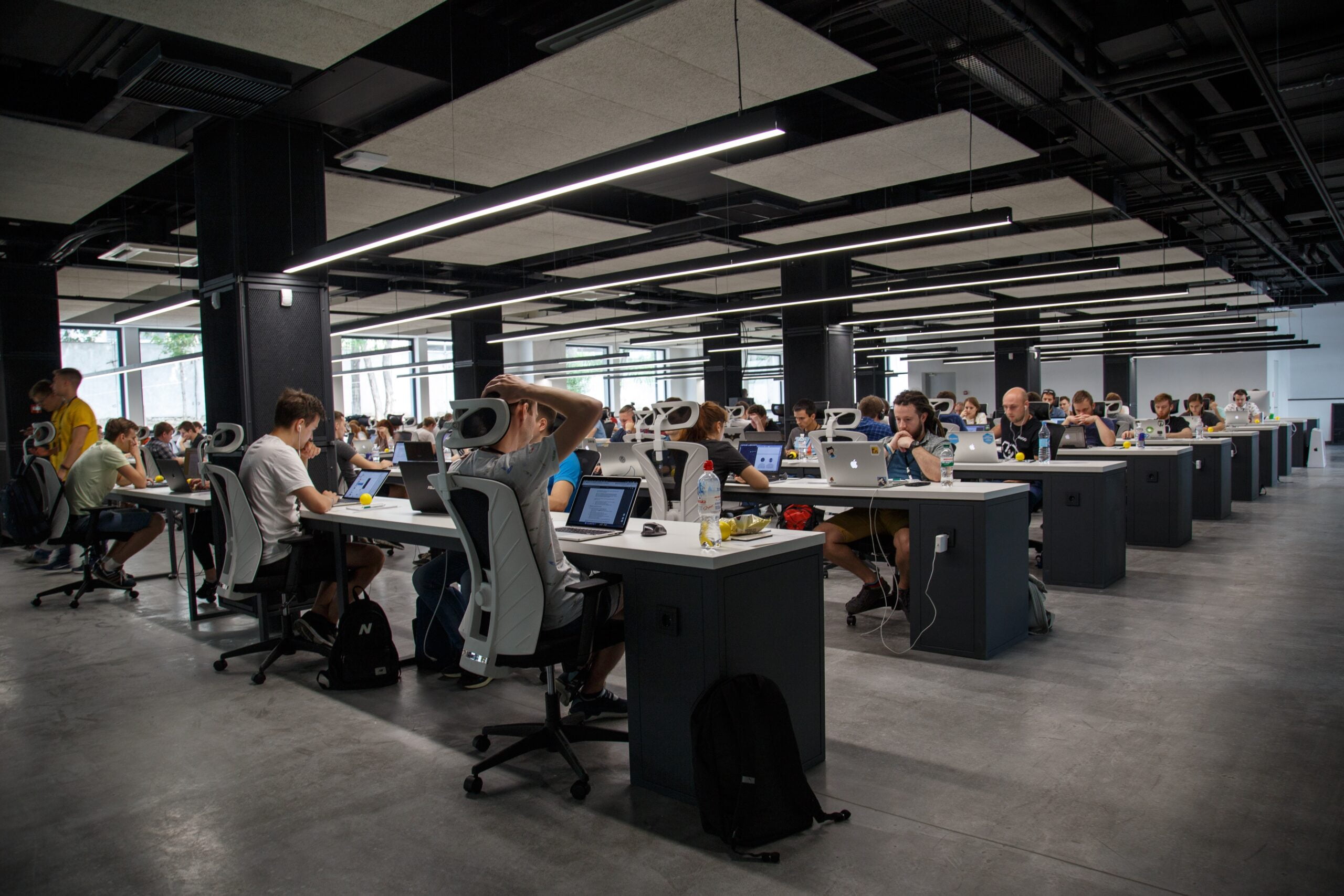Hot Desking for Beginners
[edgtf_button size=”medium” type=”solid” target=”_blank” icon_pack=”font_awesome” fa_icon=”fa-laptop” font_weight=”800″ text=”Start a free trial” link=”http://get.roomzilla.net” margin=”0 20px 10px 0″ color=”#000000″ hover_color=”#0a0a0a” hover_background_color=”#09c750″ font_size=”12″ custom_class=”buttonek”][edgtf_button size=”medium” type=”outline” target=”_blank” icon_pack=”font_awesome” fa_icon=”fa-calendar” font_weight=”800″ text=”Schedule a DEMO” link=”https://calendly.com/roomzilla” margin=”0 10px 10px 10px” hover_color=”#0a0a0a” color=”#0a0a0a” hover_background_color=”#8224e3″ font_size=”12″ custom_class=”buttonek2″ hover_border_color=”#000000″ border_color=”#8224e3″]Hot desking became popular in the US and Britain in the 1980’s as a way to free up redundant space. The term comes from the navy practice of ‘hot bunking’ where sailors had to literally hop into whatever recently vacated bunk bed was available for sleep. Similarly, hot desking provides a non-dedicated workspace for employees. There are no assigned seats and workers use whatever facilities will be most helpful to them. You won’t need to build a desk for every person because not everyone will need the desks at the same time.
How Hot Desking Can Improve Your Workspace
Hot desking is a quick way to maximize office space usage and improve collaboration. If your team is running out of space and people are getting cramped, switching to unassigned seating could be the answer. Traditional office layouts with assigned desks have an average occupancy rate of 50% because most people use their desks at different hours. Some people might prefer desk time in the morning to check emails and then want collaborative space with their team all afternoon, while sales teams might take long lunches with clients. Developers might even prefer to work evenings. When people are on different schedules, the facilities won’t get equal use. Hot desking accommodates part-time, full-time and mobile workers by guaranteeing them access at the hours that fit their personal schedules. Consolidating these schedules can cut facility costs up to 30%.
The First Steps Toward Hot Desking
If you’re thinking hot desking might be right for your team, the next step is to get an accurate baseline of current facility usage. Before you take the leap, you should gather this data so you have a solid grasp on whether there really is a high variety in workspace needs or if in fact most people are using desks at the same time. It’s the only way to know if hot desking would save your company money. One way to do this is by conducting a workspace utilization study. After you have a solid baseline, you’ll know exactly how much space you’ll need available for your team.
What Are Your Teams’ Preferred Working Styles?
After you’ve studied when and how your team uses the space, focus on how you can optimize your office space once you’re hot desking. Communicate with the people in your company so that you can provide them with the tools and resources that they need. Some people in the creative department might sit down at a proper desk in the morning to check their messages and catch up on email, and then dash off to conference rooms to collaborate with team members all afternoon. The sales team might have a couple days when they hunker down in calling booths to make cold calls, but the next they’re barely in the office because they took a three hour lunch with clients. You might need to incorporate the schedule of a part time college intern who only joins the marketing team on Tuesdays and Thursdays. As you communicate with your team members on facilities they need regularly, you’ll get a complete picture of the kind of coworking space you need to create.
What Office IT Will Need To Change?
The logistics of hot desking must include IT infrastructure. You need to make sure everyone has laptops, ‘follow me’ phone services, and enough security that they can carry their work anywhere.
There are several options to replace stationary phones. First, you can continue to use a PBX-based phone system and then just activate the ‘follow me’ capabilities. Your team members can use their phone number from anywhere in the office. VoIP services work too if people are going to be working from a variety of locations or devices. Lastly, don’t forget how much Skype and Google+ Hangout has to offer. They can keep your team connected as well. Their voice features can even be used to make external phone calls.
In order for your team to get the most out of the variety of facilities in the workspace, consider replacing desktop computers with laptops. Your team needs to be able to carry their work around with them everywhere and easily transition from a desk to lounge to conference room.
Add wireless office devices such as printers and scanners to your workspace. People can use cloud print and email-to-print to send files directly. Some printers have security features that require PIN codes before files will print. This way there’s no worry about leaving something with sensitive information in the tray out in the open. It only prints once the document’s creator arrives at the printer and types in a code to the printer’s screen.
Security Concerns
With this much mobility, many companies worry about security. People are working everywhere and need to access sensitive files. Make sure everyone has a password on their computer and locks their computers when they’re going to be away for a few minutes. Install secure lockers for your team to lock away their laptops and notebooks at night and during lunch.
Is Your Team Ready For The Transition?
Before you dive in, check to see if your team is on the same page about this transition. There are going to be some big lifestyle changes. Many people spend more hours in the office than they do at home, so personalizing their desk is a way of expressing identity and professional status. Giving that up overnight might be hard, especially for people who have been there a long time. Find out how much your team cares about “owning” their space and see if there are ways you can incorporate identity into the workplace if that is something that’s important to them.
Do any of your teams need to sit together? Some teams might need to sit together on a daily basis to accomplish their goals. Find out if there are any teams that need to stay stationary. Perhaps using chat tools and daily conference rooms will be enough to keep the team together.
Test the Waters
Before the entire team commits to hot desking, have a few people try it out. Ask a handful of volunteers (preferably a couple of people from different teams) to be the testers for a week. Allow them to come and go through the office as they please. At the end of the week ask them about their experience. Was it difficult to be away from their respective teams or were gchat and conference meetings enough to keep them feeling connected? What facilities did they use the most? Did they spend the most time at the open table in the kitchen or taking meetings in various conference rooms? Note how they spent their day. How was productivity affected? Did they get more or less done than they normally do? Take into consideration that this will be a transition no matter what, so we might not expect everyone to find their flow overnight. If this seems to be working and your testers give positive reviews, then go forth with transitioning the remainder of the team.
Hot desking can be cost effective and improve workplace satisfaction once you’ve smoothly made the transition. It’s a simple solution for cramped office spaces. Make sure to keep open communication with your team about their needs as they evolve during this time of flux. The collaborative space will feel like home in no time!






